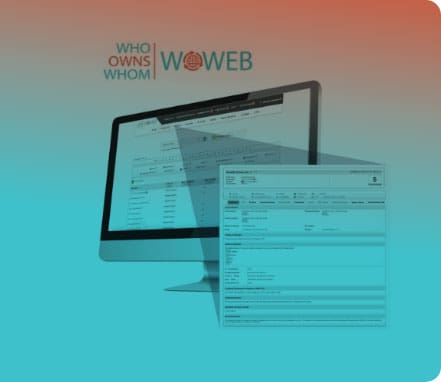Report Coverage
This report is on Botswana’s financial services industry, including banks, microfinance, savings and credit co-operative organisations and mobile money services. It includes information on the size and state of the industry and its players, including the central bank, government and licensed non-bank institutions. There is information on banking assets, capital adequacy, notable players and corporate actions, and influencing factors, including the economic environment, technology, R&D and innovation, and government support. There are profiles of 30 companies, such as the central bank, Bank of Botswana, major commercial banks such as First National Bank Botswana, Stanbic Bank, Absa, Standard Chartered Bank and Access Bank, savings and credit co-operatives such as Thuto and Motswedi, and mobile money service providers such as Orange and Mascom.
Introduction
• Botswana’s financial services sector is characterised by a mix of commercial banks, microfinance institutions, pawnshops, savings and credit co-operative organisations, foreign exchange bureaus, mobile money services and fintech.
• Banking assets are highly concentrated in four banks, and the sector is regarded as competitive, stable and resilient.
• Key issues include increasing operational costs and the economic slowdown.
• Banks rely on a few institutions for cash deposits.
• Consumers are demanding more digital and personalised services, putting pressure on banks to adapt.
Trends
• A focus on financing sustainable and green projects reducing direct funding on new coal and fossil fuel projects.
• A number of banks have increased personal unsecured loan amounts and repayment periods.
• Banks are increasing investing in digital platforms, with some banks reporting an increase in both revenues and use of digital channels.
• Banks are selectively expanding their branch network and increasing ATM numbers to reach underserved areas.
• Customers are increasingly demanding faster, more convenient, and personalised services, which puts pressure on banks to innovate and adapt.
• Fintech is a developing sector, showing promising growth, particularly in digital payments and mobile money.
• Increased demand for short-term loans, mainly from microlenders.
• Mobile banking services are becoming increasingly popular with customers preferring digital channels for transactions and other banking needs.
• Several new and enhanced financial products have been introduced, mostly targeting retail banking customers.
• The number of new licensed microlenders and pawnshops has continued to increase.
Opportunities
• Demand for short-term financing is opening opportunities for microlenders that can offer exceptional service.
• Expansion of digital products and services including online payments, mobile wallets, and digital lending.
• Financial institutions are focusing on improving customer experience leading to opportunities in relationship management, customer service and marketing.
• Mobile banking is creating opportunities in fintech.
• Provision of funding for sustainable development projects.
• Serving specific segments such as SMEs and the unbanked.
• Wealth and investment banking.
• With increasing regulations, there is need for professionals with expertise in compliance, anti-money laundering and financial crime prevention skills.
Challenges
• Events linked to climate change may affect farmers and businesses which may result in rising loan defaults.
• External factors such as diamond prices, geopolitical developments and tightening global financial conditions can pose significant risks to the banking sector, impacting profitability, and overall financial stability.
• Increasing operating expenses.
• Many SMEs operate informally, making it difficult to assess their creditworthiness and hindering access to formal finance.
• Microlenders face financial literacy issues among borrowers who fail to manage loans effectively, leading to over indebtedness.
• Microlenders have limited capacity and are often crowded out by subsidised lending from government owned development finance institutions.
• Microlenders struggle with compliance and ethical lending practices leading to potential borrower exploitation.
• Rising threats of cyber-security attacks.
• Shortage of skilled workers.
• The banking sector is heavily interconnected with other sectors.
• The dominance of short-term deposits from specific institutions can limit the ability of banks to provide long term credit.
• Traditional banks are often reluctant to finance SMEs.
Outlook
• The banking sector is heavily influenced by the mining industry.
• Weak diamond demand and production declines have impacted economic growth and banking activity.
• Potential increases in oil prices and other factors could create inflationary pressure and impact interest rates.
• In the medium term, the financial services sector is projected to continue to grow.
• Traditional banking will continue to dominate, while digital banking and mobile money will make inroads.
• Microlending is projected to record moderate growth.
• Global economic challenges will remain a threat to the sector.
Full Report
R 20 000.00(ZAR) estimated $1152.18 (USD)*
Industry Landscape
R 14 000.00(ZAR) estimated $ 806.52 (USD)*
Table of Contents
[ Close ]| PAGE | ||
|---|---|---|
| 1. | INTRODUCTION | 1 |
| 2. | COUNTRY INFORMATION | 1 |
| 3. | DESCRIPTION OF THE INDUSTRY | 3 |
| 3.1. | Value Chain | 8 |
| 3.2. | Geographic Position | 9 |
| 3.3. | Size of the Industry | 9 |
| 4. | LOCAL | 12 |
| 4.1. | State of the Industry | 12 |
| 4.2. | Key Trends | 19 |
| 4.3. | Key Issues | 19 |
| 4.4. | Notable Players | 20 |
| 4.5. | Corporate Actions | 24 |
| 4.6. | Regulations | 24 |
| 4.7. | Enterprise Development and Social Development | 25 |
| 5. | AFRICA | 26 |
| 6. | INTERNATIONAL | 30 |
| 7. | INFLUENCING FACTORS | 31 |
| 7.1. | Unforeseen Events | 31 |
| 7.2. | Economic Environment | 32 |
| 7.3. | Labour | 34 |
| 7.4. | Environmental Issues | 36 |
| 7.5. | Technology, R&D, Innovation | 37 |
| 7.6. | Government Support | 38 |
| 7.7. | Input Costs | 38 |
| 7.8. | Cybersecurity | 38 |
| 7.9. | Mobile Broadband Internet | 39 |
| 8. | COMPETITIVE ENVIRONMENT | 39 |
| 8.1. | Competition | 39 |
| 8.2. | Ownership Structure of the Industry | 39 |
| 8.3. | Barriers to Entry | 40 |
| 9. | INDUSTRY SUMMARY | 40 |
| 10. | OUTLOOK | 42 |
| 11. | INDUSTRY ASSOCIATIONS | 42 |
| 12. | REFERENCES | 43 |
| 12.1. | Publications | 43 |
| 12.2. | Websites | 43 |
| ANNEXURE 1 | 45 | |
| Relevant Legislation | 45 | |
| APPENDIX 1 | 46 | |
| Summary of Notable Players | 46 | |
| COMPANY PROFILES | 51 | |
| ABSA BANK BOTSWANA LTD | 51 | |
| ACCESS BANK BOTSWANA LTD | 55 | |
| AFRITEC (PTY) LTD | 59 | |
| BANK GABORONE LTD | 61 | |
| BANK OF BARODA (BOTSWANA) LTD | 64 | |
| BANK OF BOTSWANA | 67 | |
| BBS BANK LTD | 70 | |
| BOTSWANA DEVELOPMENT CORPORATION LTD | 73 | |
| BOTSWANA HOUSING CORPORATION | 78 | |
| BOTSWANA POSTAL SERVICES LTD | 81 | |
| BOTSWANA SAVINGS BANK | 84 | |
| BOTSWANA TELECOMMUNICATIONS CORPORATION LTD | 88 | |
| CITIZEN ENTREPRENEURIAL DEVELOPMENT AGENCY (CEDA) | 91 | |
| FIRST CAPITAL BANK LTD (BOTSWANA) | 94 | |
| FIRST NATIONAL BANK OF BOTSWANA LTD | 98 | |
| FIRSTCRED LTD | 102 | |
| LAMNA BOTSWANA (PTY) LTD | 104 | |
| LANNY CAPITAL (PTY) LTD | 105 | |
| LETSHEGO FINANCIAL SERVICES (PTY) LTD | 107 | |
| MAITLAMO SAVINGS AND CREDIT CO-OPERATIVE SOCIETY LTD | 109 | |
| MASCOM WIRELESS BOTSWANA (PTY) LTD | 111 | |
| MONEY QUEST INVESTMENTS (PTY) LTD | 115 | |
| MOTSWEDI SAVINGS AND CREDIT CO-OPERATIVE SOCIETY LTD | 118 | |
| NATIONAL DEVELOPMENT BANK | 120 | |
| NORSAD CAPITAL LTD | 123 | |
| ORANGE MONEY BOTSWANA (PTY) LTD | 126 | |
| STANBIC BANK (BOTSWANA) LTD | 128 | |
| STANDARD CHARTERED BANK BOTSWANA LTD | 131 | |
| THUTO SAVINGS AND CREDIT COOPERATIVE SOCIETY LTD | 135 | |
| WATER SOLUTIONS MINING BOTSWANA (PTY) LTD | 137 |



